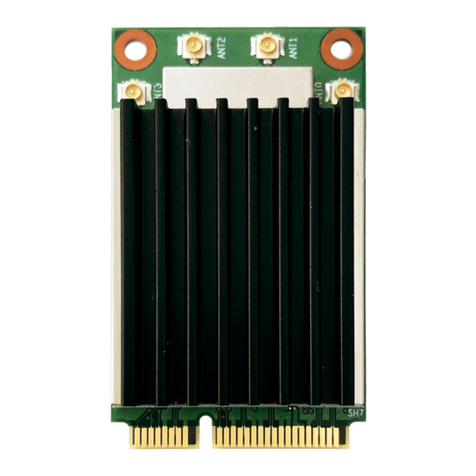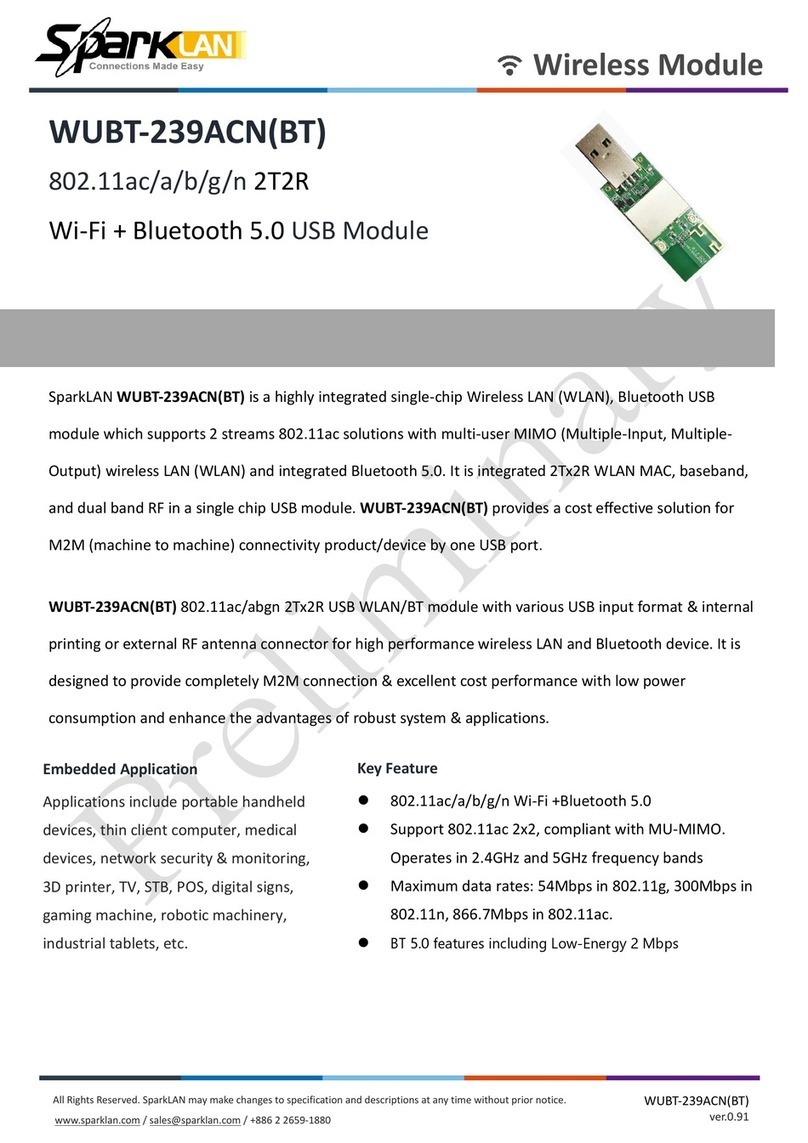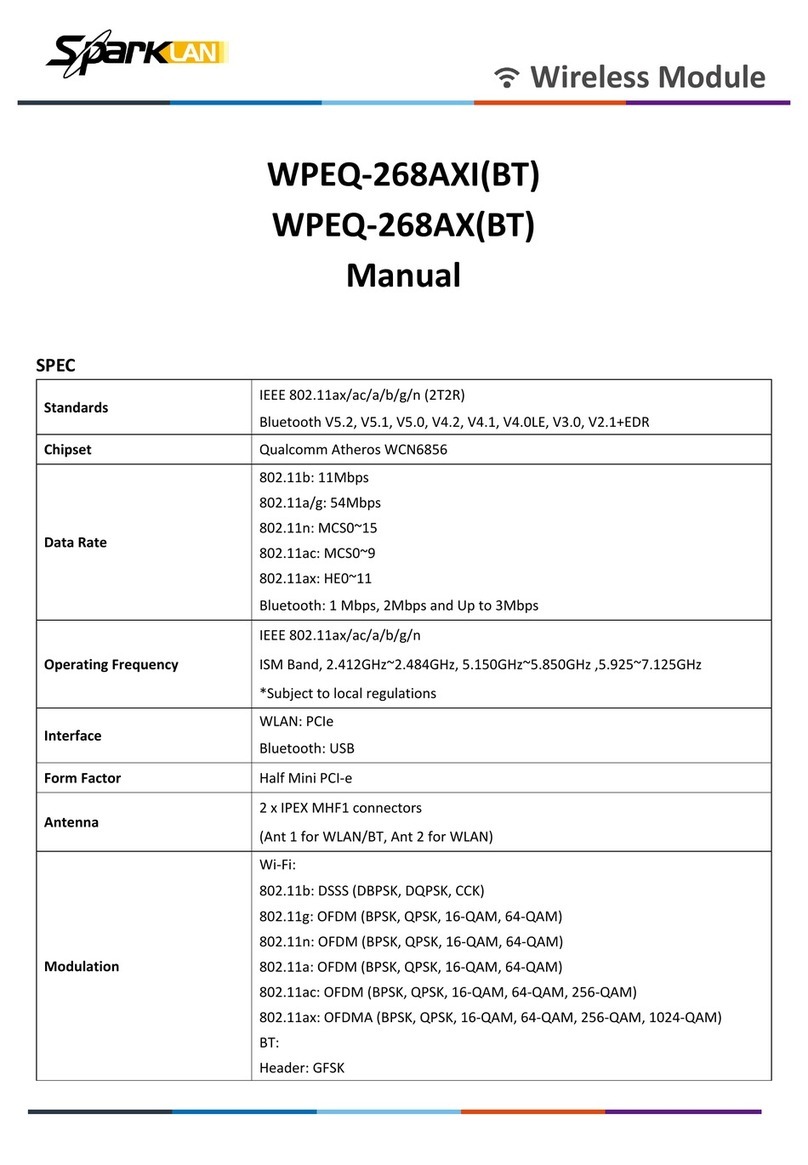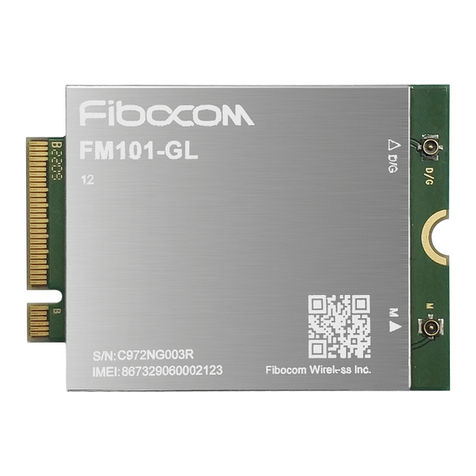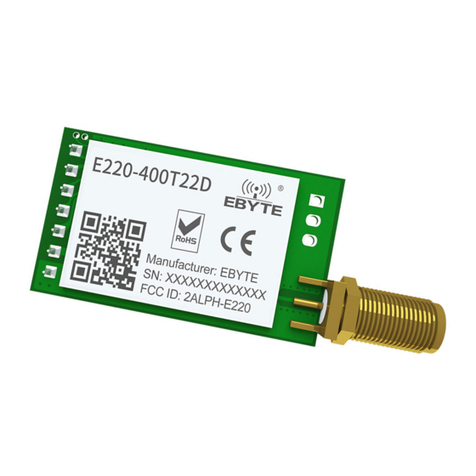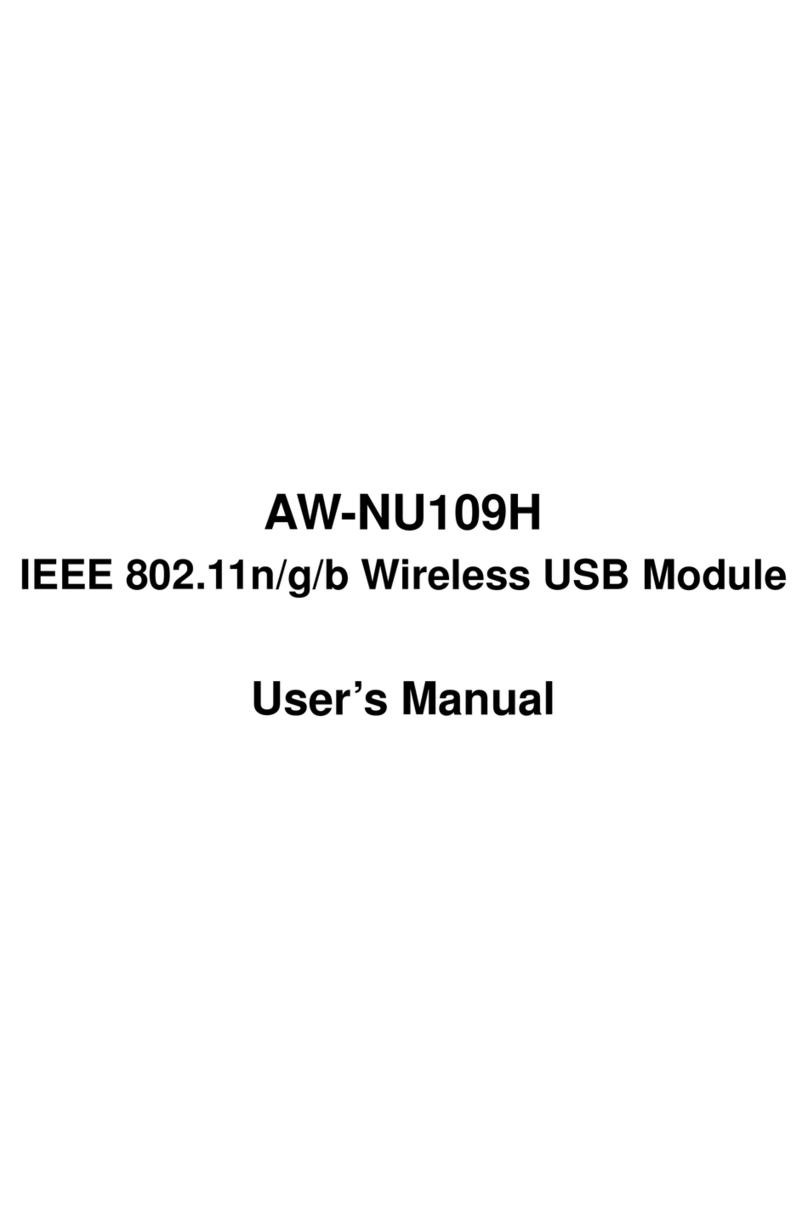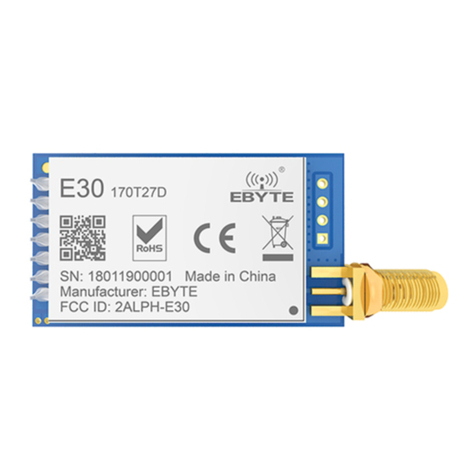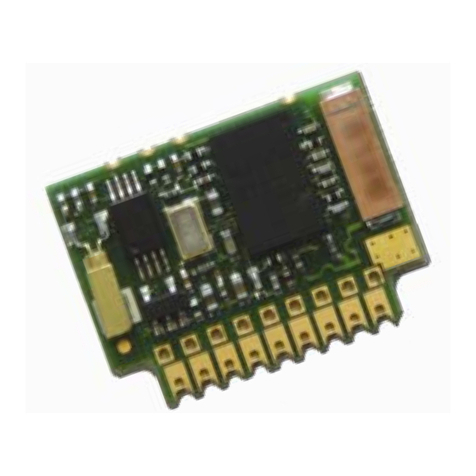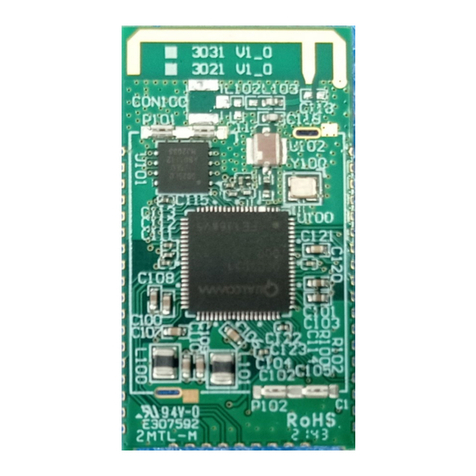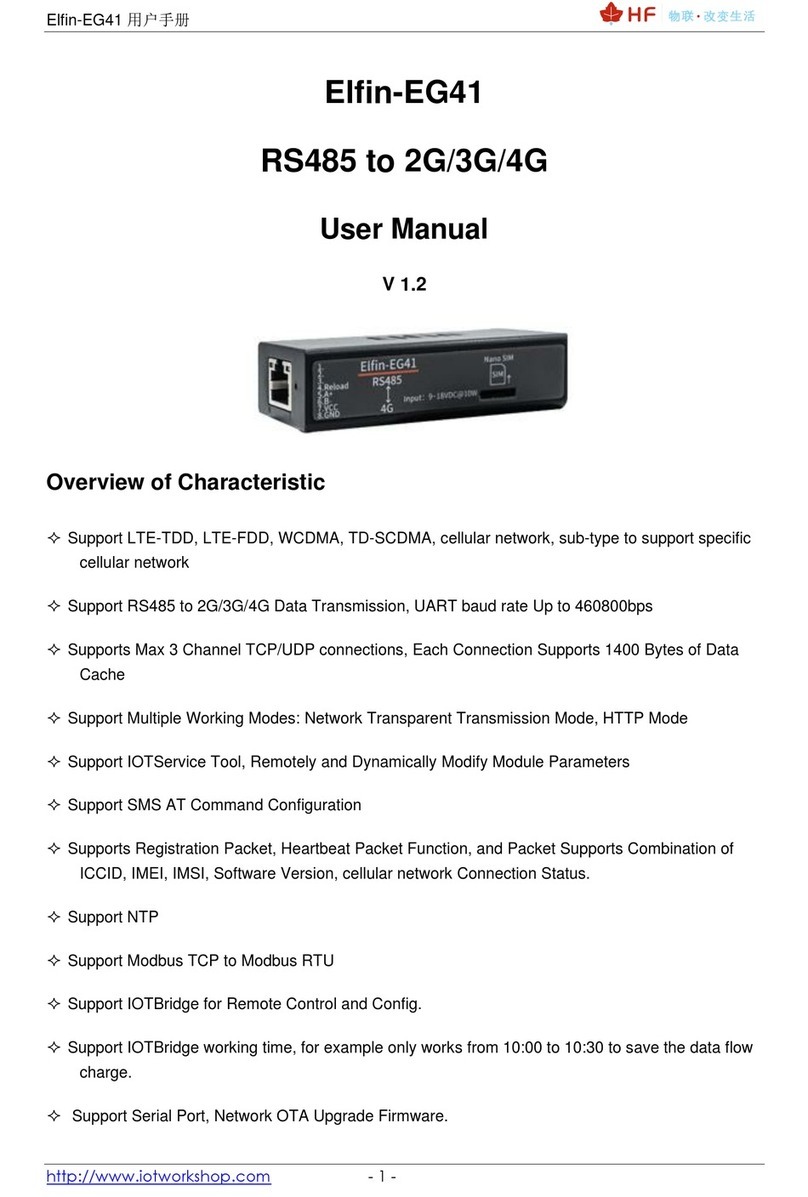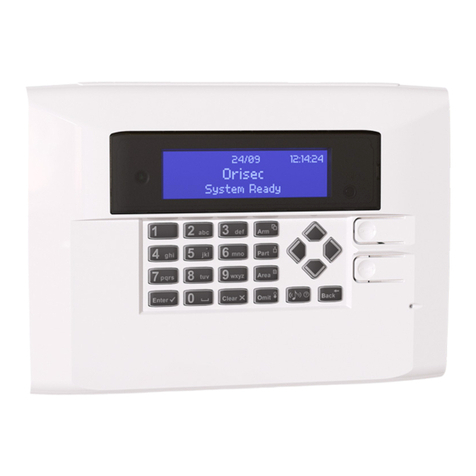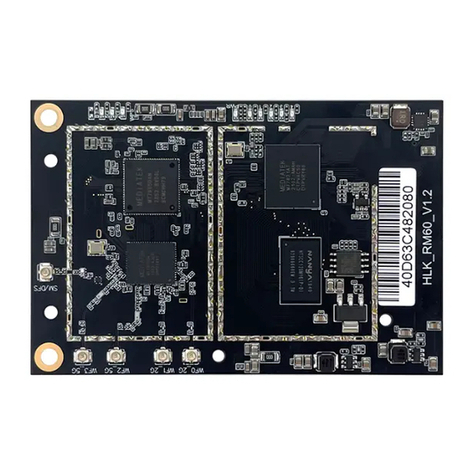Sparklan WPEB-265AXI B33 User manual

Wireless Module
SparkLAN
WPEB-265AXI(BT) [B33] & AP12275_PB33
WPEB-265AXI(BT) [B18] & AP12275_PB18
WPEB-265AXI(BT) [R33] & AP12275_PR33
WPEB-265AXI(BT) [R18] & AP12275_PR18
HW User manual
Version 0.0
Revision History
Date
Revision Content
Revised By
Version
2020/12/30
Initial released
Wayne
0.0

Wireless Module
Contents
Revision History............................................................................................................... 0
1. WPEB-265AXI(BT) [XXX] Series Hardware User Manual Introduction ................... 2
1.1. Module Block Diagram .....................................................................................2
1.2. External Reference Circuit ...............................................................................3
2. PCB Layout Guide ...................................................................................................... 5
2.1. PCI-e Layout Guide..........................................................................................5
2.2 USB Layout Guide............................................................................................5
List of Figures
Figure1. WPEB-265AXI(BT) [XXX] Series PCI-e Half-Mini Card Block Diagram..........2
Figure2. External Reference Circuit..............................................................................3
Figure3. PCI-e Interface Connection Diagram..............................................................4
Figure4. UART and USB Interface Connection Diagram ..............................................4

Wireless Module
1. WPEB-265AXI(BT) [XXX] Series Hardware
User Manual Introduction
This document provides customers with considerations for the hardware design of
WPEB-265AXI(BT) [XXX] series. It includes hardware block diagram, reference design,
PCB layout, and PCB stack up, which will be explained in detail below.
1.1. Module Block Diagram
Figure1. WPEB-265AXI(BT) [XXX] Series PCI-e Half-Mini Card Block Diagram
In Figure 1, The WPEB-265AXI(BT) [XXX] series PCI-e Half-Mini Card is a dual-band
Wi-Fi 2x2 IEEE 802.11ax module with integrated Bluetooth 5.0. The WLAN host interface is
PCI-e v3.0 compliant and runs at Gen2 speeds. The Bluetooth host interface is
a USB interface and it also supports UART interface. The WPEB-265AXI(BT) [XXX] is
powered by the VDD (3.0V to 3.6V) supplies. All other voltages are provided by internal
regulators.
&AP12275_ P B 33
AmpakSparkLAN
USB(PB33/B18)
UART(PR33/PR18)
PCIe
VDD
Antenna2
Antenna1
AP12275_P Series
PCI-e Half-Mini Card
BT
Wi-Fi
HOST
GPIOs
VDD: Typ. 3.3V (3.0V~3.6V)/1.25A
WPEB-265AXI(BT) [ B 33 ]
GPIOs Voltage Level
18: Typ. 1.8V (1.62V~1.98V)
33: Typ. 3.3V (3.0V~3.6V)
B: Bluetooth USB Interface
R: Bluetooth UART Interface
P: Wi-Fi PCI-e Interface

Wireless Module
1.2. External Reference Circuit
Figure2. External Reference Circuit
The recommended schematic configuration for all of the interfaces and GPIOs are
shown as figure 2. The connection block diagram of the PCI-e interface is shown in
figure 3. However, the connection block diagram of UART and USB interfaces is
shown in figure 4.
*Note:The Bluetooth host interface only supports one of UART or USBfor each kind of product.
C30 NP
C32 NP
C31 NP
C33 NP
C35 NP
C34 NP
WL_REG_ON
C123 100pF
C124 100pF
Turn on the Wi-Fi function at default.
VIO
R34 10K
R35 0R
C121 0.1uF
HOST_PCIE_CLKREQn PCIE_CLKREQn
R115 0R
C122 0.1uF
R116 0R
BT_REG_ON
Turn on the BT function at default.
BT_UAR T_R TS_NHOST_UART_CTS_N
BT_UAR T_C TS_N
BT_UART_RXDHOST_U AR T_TXD
BT_UAR T_TXDHOST_UART_RXD
WLAN
Connected to HOST I/O
HOST_UART_RTS_N
R81
NP/10K
BT
HOST_PCIE_RDN
HOST_PCIE_RDP
HOST_PCIE_TDN
HOST_PCIE_TDP PCIE_RDP
HOST_PCIE_REFCLKP PCIE_REFCLKP
PCIE_RDN
VIO
PCIE_PRRST_L
PCIE_REFCLKN
R82
NC/10K
PCIE_TDP
PCIE_TDN
HOST_PCIE_REFCLKN
VIO Voltage Level
[B33], [R33] : Typ.3.3V (3.0V~3.6V)
[B18], [R18] : Typ.1.8V (1.62V~1.98V)
HOST_USB_D+ USB_D+
HOST_USB_D- USB_D-
UART Interface
[R33], [R18]
USB Interface
[B33], [B18]

Wireless Module
Figure3. PCI-e Interface Connection Diagram
Figure4. UART and USB Interface Connection Diagram
PCIE_REFCLKP
PCIe_RDN
PCIe_RDP
PCIe_TDN
PCIe_TDP
PCIE_TDN
PCIE_TDP
PCIE_RDN
PCIE_RDP
HOST
PCIe interface conection diagram
PCIE_REFCLKNPCIE_REFCLKN
PCIE_REFCLKP
WPEB-265AXI(BT) [XXX]
UART_CTS_N
UART & PCM interface conection diagram
UART_RXD
UART_TXD
UART_RTS_N
UART_CTS_N
UART_RTS_N
UART_TXD
UART_RXD
WPEB-265AXI(BT) [XXX]HOST
USB_D+
USB_D-
USB_D+
USB_D-

Wireless Module
2. PCB Layout Guide
2.1. PCI-e Layout Guide
1. The PCI-e differential pair signals impedance target is 100±20% ohms
impedance.
2. Do not place probe or test points on any high-speed differential signal.
3. Do not route high-speed traces under or near crystals, oscillators, clock signal
generators, switching power regulators, mounting holes, magnetic devices, or ICs
that use or duplicate clock signals.
4. The traces routing don't be 90° angle.
5. For PCI-e add-in card, any layer under edge finger area should be removed.
Including ground and power layers.
6. Ensure that high-speed differential signals are routed at least 1.5 W (calculated
trace-width × 1.5) away from voids in the reference plane. This rule does not apply
where SMD pads on high-speed differential signals are voided.
7. Maximize differential pair-to-pair spacing when possible.
2.2 USB Layout Guide
1. DP/DM traces should always be matched lengths and must be no more than 4
inches in length; otherwise, the eye opening may be degraded.
2. Route DP/DM traces close together for noise rejection on differential signals, parallel
to each other and within two mils in length of each other (start the measurement at
the chip package boundary, not to the balls or pins).
3. A high-speed USB connection is made through a shielded, twisted pair cable with a
differential characteristic impedance of 90 Ω ±15%. In layout, the impedance of DP
and DM should each be 45 Ω ± 10%.
4. DP/DM traces should not have any extra components to maintain signal integrity. For
example, traces cannot be routed to two USB connectors.
5. When a via must be used, increase the clearance size around it to minimize its
capacitance. Each via introduces discontinuities in the signal’s transmission line and
increases the chance of picking up interference from the other layers of the board.
Be careful when designing test points on twisted pair lines; through-hole pins are not
recommended.

Federal Communication Commission Interference Statement:
This equipment has been tested and found to comply with the limits for a Class B
digital device, pursuant to part 15 of the FCC Rules. These limits are designed to
provide reasonable protection against harmful interference in a residential
installation. This equipment generates, uses and can radiate radio frequency energy
and, if not installed and used in accordance with the instructions, may cause harmful
interference to radio communications. However, there is no guarantee that
interference will not occur in a particular installation. If this equipment does cause
harmful interference to radio or television reception, which can be determined by
turning the equipment off and on, the user is encouraged to try to correct the
interference by one or more of the following measures:
—Reorient or relocate the receiving antenna.
—Increase the separation between the equipment and receiver.
—Connect the equipment into an outlet on a circuit different from that to which the
receiver is connected.
—Consult the dealer or an experienced radio/TV technician for help.
Any changes or modifications not expressly approved by the party responsible for
compliance could void your authority to operate the equipment.
RF exposure statements
This Transmitter must not be co-located or operating in conjunction with any other
antenna or transmitter.
This equipment complies with FCC RF radiation exposure limits set forth for an
uncontrolled environment. This equipment should be installed and operated with a
minimum distance of 20 centimeters between the radiator and your body or
nearby persons.
CFR 47 FCC PART 15 SUBPART C (15.247) and SUBPART E (15.407) has been
investigated. It is applicable to the modular transmitter.
The devices must be installed and used in strict accordance with the manufacturer's
instructions as described in the user documentation that comes with the product.
This radio transmitter RYK-WPEB265AXIBT has been approved by Federal
Communications Commission to operate with the antenna types listed below, with

the maximum permissible gain indicated. Antenna types not included in this list that
have a gain greater than the maximum gain indicated for any type listed are strictly
prohibited for use with this device.
Unique antenna connector (RP-SMA) must be used on the Part 15 authorized
transmitters used in the host product.
Antenna Type
Antenna Model
Maximum Gain (dBi)
Remark
2.4 GHz 5GHz
Dipole AD-103AG 2.02 dBi 2.03 dBi
Dipole AD-302N 3.14 dBi 2.73 dBi
Dipole AD-303N 3.14 dBi 3.24 dBi
Length of Antenna cable:150mm
Connector type of Antenna cable: I-PEX/MHF1 to RP-SMA(F)
If the FCC identification number is not visible when the module is installed inside
another device, then the outside ofthe device into which the module isinstalled
must alsodisplay a label referring tothe enclosed module. This exterior label can
use wording such as the following: “Contains Transmitter Module FCC ID: RYK-
WPEB265AXIBT”Or“Contains FCC ID: RYK-WPEB265AXIBT”
The modular transmitter is only FCC authorized for the specific rule parts (i.e., FCC
transmitter rules) listed on the grant, and thehost product manufacturer is
responsible for compliance toany other FCC rules that apply to the host not
covered by the modular transmitter grant of certification. The final host product still
requires Part 15Subpart B compliance testing with the modular transmitter
installed.

Industry Canada statement:
This device complies with Industry Canada license-exempt RSSs. Operation is subject
to the following two conditions:
1) This device may not cause interference, and
2) This device must accept any interference, including interference that may cause
undesired operation of the device.
Le présent appareil est conforme aux CNR d’Industrie Canada applicables aux
appareils radio exempts de licence. L’exploitation est autorisée aux deux conditions
suivantes :
1) l’appareil ne doit pas produire de brouillage;
2) l’utilisateur de l’appareil doit accepter tout brouillage radioélectrique subi, meme
si le brouillage est susceptible d’en compromettre le fonctionnement.
Caution:
1) The device for operation in the band 5150–5250 MHz is only for indoor use to
reduce the potential for harmful interference to co-channel mobile satellite systems;
2) For devices with detachable antenna(s), the maximum antenna gain permitted for
devices in the bands 5250-5350 MHz and 5470-5725 MHz shall be such that the
equipment still complies with the e.i.r.p. limit;
3) For devices with detachable antenna(s), the maximum antenna gain permitted for
devices in the band 5725-5850 MHz shall be such that the equipment still complies
with the e.i.r.p. limits specified for point-to-point and non-point-to-point operation as
appropriate; and
Avertissement:
1) Le dispositif fonctionnant dans la bande 5150-5250 MHz est réservé uniquement
pour une utilisation à l’intérieur afin de réduire les risques de brouillage préjudiciable
aux systèmes de satellites mobiles utilisant les mêmes canaux;
2) Le gain maximal d’antenne permis pour les dispositifs avec antenne(s) amovible(s)
utilisant les bandes 5250-5350 MHz et 5470-5725 MHz doit se conformer à la
imitation P.I.R.E.;
3) Le gain maximal d’antenne permis pour les dispositifs avec antenne(s) amovible(s)
utilisant la bande 5725-5850 MHz doit se conformer à la limitation P.I.R.E spécifiée

pour l’exploitation point à point et non point à point, selon le cas.
Radiation Exposure Statement:
This equipment complies with IC radiation exposure limits set forth for an
uncontrolled environment. This equipment should be installed and operated with
minimum distance 20cm between the radiator & your body.
Déclaration d’exposition aux radiations:
Cet équipement est conforme aux limites d’exposition aux rayonnements IC établies
pour un environnement non contrôlé. Cet équipement doit être installé et utilisé
avec un minimum de 20 cm de distance entre la source de rayonnement et votre
corps.
This radio transmitter (IC: 6158A-PEB265AXIBT has been approved by Industry
Canada to operate with the antenna types listed below with the maximum
permissible gain indicated. Antenna types not included in this list, having a gain
greater than the maximum gain indicated for that type, are strictly prohibited for use
with this device.
Le présent émetteur radio (IC: 6158A-PEB265AXIBT a été approuvé par Industrie
Canada pour fonctionner avec les types d'antenne énumérés cidessous et ayant un
gain admissible maximal. Les types d'antenne non inclus dans cette liste, et dont le
gain est supérieur au gain maximal indiqué, sont strictement interdits pour
l'exploitation de l'émetteur.
Antenna Type
Antenna Model
Maximum Gain (dBi)
Remark
2.4 GHz 5GHz
Dipole AD-103AG 2.02 dBi 2.03 dBi
Dipole AD-302N 3.14 dBi 2.73 dBi
Dipole AD-303N 3.14 dBi 3.24 dBi
If the ISED certification number is not visible when the module is installed inside
another device, then the outside of the device into which the module is installed
must also display a label referring to the enclosed module. This exterior label can use
wording such as the following: “Contains IC: 6158A-PEB265AXIBT”.
Si le numéro de certification ISDE n'est pas visible lorsque le module est installé à
l'intérieur d'un autre appareil, alors l'extérieur de l'appareil dans lequel le module est
installé doit également afficher une étiquette faisant référence au module inclus.

Cette étiquette extérieure peut utiliser un libellé comme celui-ci: “ Contient IC:
6158A-PEB265AXIBT“.
Plaque signalétique du produit final:
Le produit final doit être étiqueté dans un endroit visible avec l'inscription suivante:
"Contient des IC: 6158A-PEB265AXIBT ".
Manual Information To the End User:
The OEM integrator has to be aware not to provide information to the end user
regarding how to install or remove this RF module in the user’s manual of the end
product which integrates this module.
The end user manual shall include all required regulatory information/warning as
show in this manual.
Manuel d'information à l'utilisateur final
L'intégrateur OEM doit être conscient de ne pas fournir des informations à
l'utilisateur final quant à la façon d'installer ou de supprimer ce module RF dans le
manuel de l'utilisateur du produit final qui intègre ce module. Le manuel de
l'utilisateur final doit inclure toutes les informations réglementaires requises et
avertissements comme indiqué dans ce manue
Must use the device only in host devices that meet the FCC/ISED RF exposure
category of mobile, which means the device is installed and used at distances of at
least 20cm from persons.
The end user manual shall include FCC Part 15 /ISED RSS GEN compliance statements
related to the transmitter as show in this manual.
Host manufacturer is responsible for compliance of the host system with module
installed with all other applicable requirements for the system such as Part 15 B, ICES
003.
Host manufacturer is strongly recommended to confirm compliance with FCC/ISED
requirements for the transmitter when the module is installed in the host.
Must have on the host device a label showing Contains FCC ID: 6158A-PEB265AXIBT,
Contains IC: 6158A-PEB265AXIBT
The use condition limitations extend to professional users, then instructions must
state that this information also extends to the host manufacturer’s instruction
manual.
If the end product will involve the Multiple simultaneously transmitting condition or

different operational conditions for a stand-alone modular transmitter in a host, host
manufacturer have to consult with module manufacturer for the installation method
in end system.
l'hôte doit utiliser l'instrument uniquement dans des dispositifs qui répondent à la
fcc / (catégorie d'exposition rf mobile, ce qui signifie le dispositif est installé et utilisé
à une distance d'au moins 20 cm de personnes.
le manuel de l'utilisateur final doit inclure la partie 15 / (fac rss gen déclarations de
conformité relatives à l'émetteur que de montrer dans ce manuel.
le fabricant est responsable de la conformité de l'hôte, le système d'accueil avec le
module installé avec toutes les autres exigences applicables du système comme la
partie 15 b, ices - 003. accueillir le fabricant est fortement recommandé de confirmer
la conformité avec les exigences de la fcc / (émetteur lorsque le module est installé
dans l'hôte.
le dispositif d'accueil doivent avoir une étiquette indiquant contient FCC ID: RYK-
WPEB265AXIBT, contient IC : 6158A-PEB265AXIBT
This manual suits for next models
7
Table of contents
Other Sparklan Wireless Module manuals
Popular Wireless Module manuals by other brands

Ebyte
Ebyte E22-900T22S user manual

Sierra Wireless
Sierra Wireless EM9190 Hardware integration guide
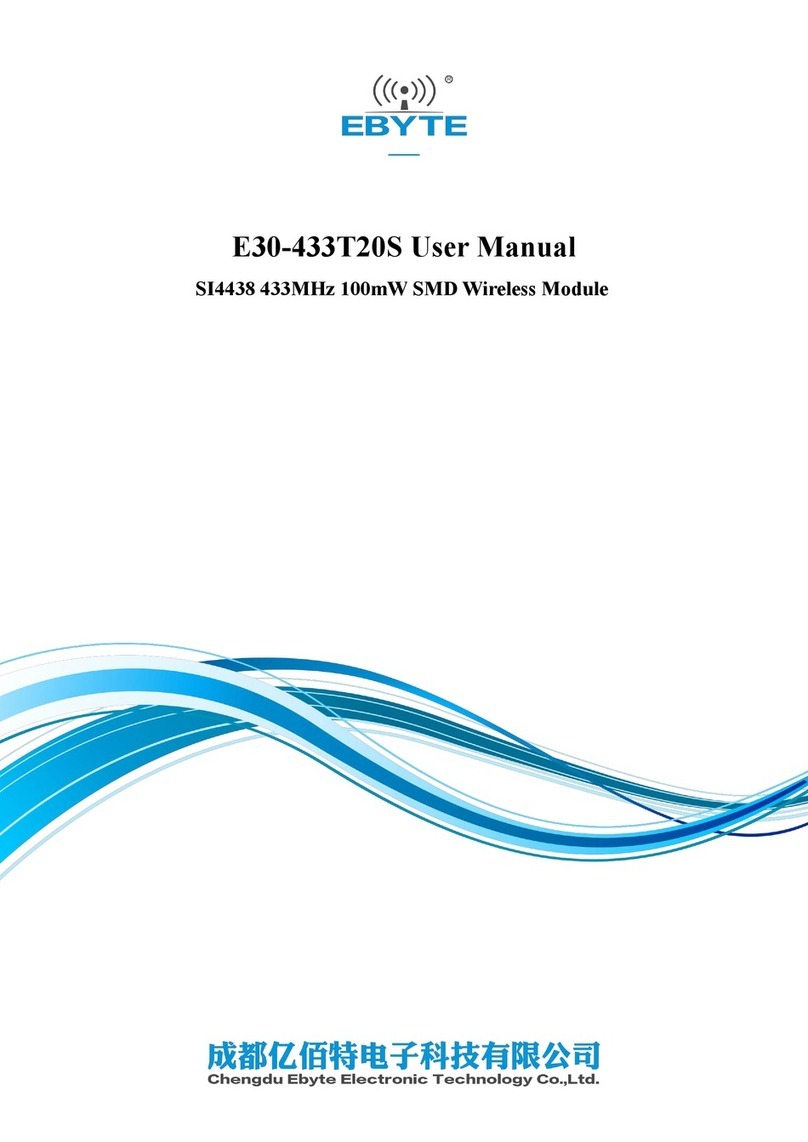
Ebyte
Ebyte E30-433T20S user manual
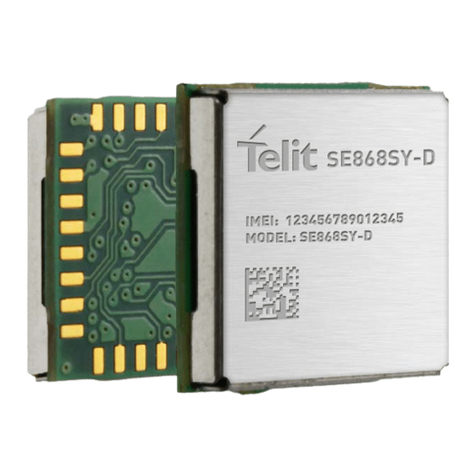
Telit Wireless Solutions
Telit Wireless Solutions SE868SY-D user guide

C-Max
C-Max CMM-9301-V3.1S user manual
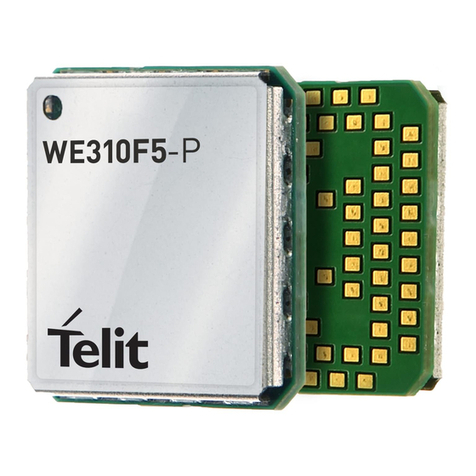
Telit Wireless Solutions
Telit Wireless Solutions WE310F5-I reference guide

